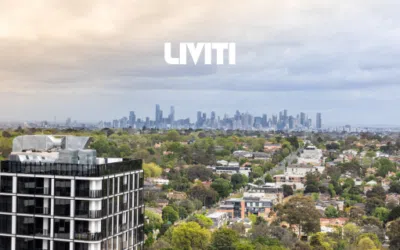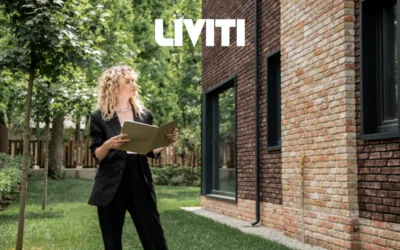The Labour Party has won the 2025 federal election by a landslide, and that’s going to bring big changes to how Australia’s politics and economy work. Whenever the government switches, it shakes up heaps of areas around the country, and the property market is one that really gets hit hard because it depends so much on what the government decides to do.
In this article, we’ll explain what this Labour win means for people who own homes, those who buy properties to make a bit of cash, folks who rent, and the ones building new places. We’ll also have a look at how this could change the bigger picture for Australia’s economy and the rules around property in the years ahead.
Labour Party’s Housing Platform: A Refresher
Labour’s campaign in 2025 placed a heavy emphasis on housing affordability, tenant rights, and social infrastructure. Among the key housing-related policy promises were:
- Increased investment in social and affordable housing, with a target of building 250,000 new dwellings over the next five years.
- A review of negative gearing and capital gains tax concessions, aimed at rebalancing the market in favour of first-home buyers.
- Stronger rental reforms, including caps on annual rent increases and longer-term rental agreements.
- Support for build-to-rent developments, through financial incentives and planning reforms.
- Commitments to net-zero emissions in new housing developments, introducing environmental building standards that will affect developers and landlords.
These proposals mark a clear departure from the more investor-friendly approach of previous Liberal governments, signalling potential change — and opportunity — for many market participants.

The Impact on Property Investors
One of the most closely watched aspects of Labour’s win is its stance on negative gearing and capital gains tax (CGT). While the party has ruled out any immediate changes to existing arrangements, there is strong speculation that future reforms may limit tax deductions on newly purchased investment properties or alter CGT concessions for long-term holdings.
Potential implications for investors include:
- Reduced tax incentives may dampen demand for investment properties, especially in major cities.
- A shift in investment interest towards new builds, if negative gearing is restricted to newly constructed homes.
- Increased interest in build-to-rent schemes, as institutional investors seek to take advantage of emerging government incentives.
While this may raise concerns for some investors, others may see opportunity in adjusting their strategies to align with future tax settings and planning regulations.

First-Home Buyers: A Market Tilt in Their Favour?
Labour’s platform has long aimed to level the playing field for first-time buyers, who have been squeezed by high prices, investor competition, and sluggish wage growth. By reviewing property tax concessions and investing in new housing stock, the new government hopes to create more accessible entry points into the market.
Benefits for first-home buyers may include:
- Greater housing supply and reduced competition from investors could ease price pressures in key metropolitan areas.
- Enhanced government support through shared equity schemes and first-home buyer grants.
- More opportunities in the outer suburbs and regional areas due to expanded infrastructure investment.
The success of these policies will depend largely on implementation and market conditions, but sentiment among young buyers is likely to improve in the short term.
Renters and the Rental Market
Labour’s all about helping renters, you know? They promised to make renting less of a hassle—more secure, cheaper, and just better overall. Look, finding a place to live that’s not gonna break the bank is a huge deal for heaps of Aussies right now. So, if they shake things up in the rental market, it could really change things for people renting and the folks who own the places.
Key reforms include:
- National standards for rental increases, limiting how often and by how much landlords can raise rents.
- Promotion of longer-term leases, aiming to provide renters with greater stability.
- Funding for minimum housing quality standards, including insulation, ventilation, and safety features.
For landlords, these changes may introduce new compliance costs and potentially limit rental yields in the short term. However, they also pave the way for more stable tenancies and could encourage institutional ownership in the rental market.
Developers and the Construction Industry
Labour’s housing plan includes a significant ramp-up in public and affordable housing construction, which may provide a much-needed boost to the construction and development sector, particularly in the wake of material shortages and labour cost increases seen in recent years.
Developers may see:
- Increased demand for partnerships in government-backed housing projects.
- Incentives for sustainable building practices and energy-efficient developments.
- Zoning and planning reform aimed at streamlining approvals for high-density and affordable projects.
While developers may benefit from the volume of work available, compliance with stricter environmental and social mandates may require upfront investment and innovation.
Economic and Regulatory Considerations
The property market does not exist in isolation. Broader economic indicators — such as interest rates, consumer confidence, and migration policy — will also shape outcomes.
- Labour is expected to maintain a collaborative stance with the Reserve Bank, supporting low to moderate interest rates while inflation remains under control.
- Immigration is set to increase slightly under Labour’s skilled migration plan, potentially supporting housing demand in urban centres.
- Infrastructure spending is likely to remain robust, with ongoing investments in transport and regional development — factors that can support suburban and regional property values.
Market observers should also pay attention to state-level housing policy, as some measures (e.g., stamp duty reform) fall outside federal jurisdiction.
Read more: U.S. Tariffs Rattle Aussie Economy – But Property Prices Could Soar in 2025
Expert Perspectives
According to Sarah Connor, Chief Economist at Urban Property Insights:
“Labour’s win reflects a growing appetite for structural change in housing policy. While investors may need to reassess their tax strategies, the broader market could benefit from increased supply and stability, especially if reforms are balanced and predictable.”
Meanwhile, Tom Green, Director at Green & Co. Real Estate, notes:
“Rental reforms could initially deter some private landlords, but institutional interest in build-to-rent housing may grow. It’s an evolving space with long-term potential.”
What Should Stakeholders Watch Next?
In the wake of Labour’s victory, the property sector should closely monitor:
- The 2025 Federal Budget, which is expected to flesh out funding commitments and timelines.
- Legislative developments around rental reform and taxation, likely to emerge within the first 12 months.
- Market reaction and sentiment shifts, particularly in metropolitan areas with high investor activity.
Final Thoughts
A Labour win in the 2025 federal election marks a potential turning point for the Australian property market. With policy direction shifting towards affordability, sustainability, and housing equity, stakeholders must adapt to a changing environment.
While some investors may see short-term headwinds, long-term opportunities exist for those willing to pivot strategies and align with new market realities. Homebuyers and renters may benefit from increased support and supply, while developers could find new growth avenues in public-private partnerships and green construction.
As with any political change, the real estate market will respond not just to promises, but to delivery. For now, watch this space — and plan strategically.




